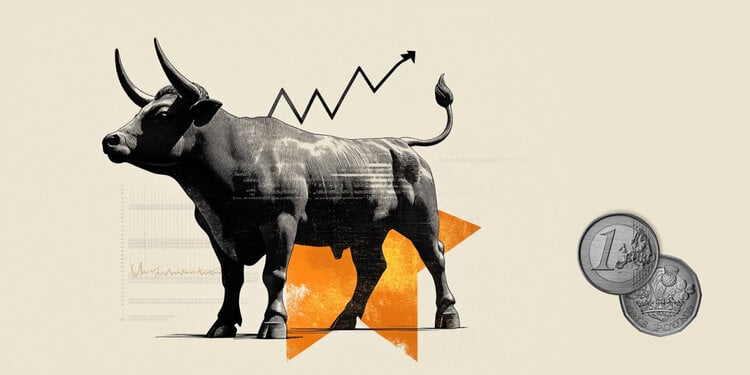Could Lagarde’s message overshadow the ECB’s widely expected hold in interest rates?
The European Central Bank (ECB) is expected to stand pat for the third consecutive monetary policy meeting, holding the interest rate on the main refinancing operations, the marginal lending facility and the deposit facility at 2.15%, 2.4% and 2%, respectively. The decision will be announced on Thursday at 13:15 GMT.
The interest rate decision will not be accompanied by the staff’s updated economic projections, but will be followed by ECB President Christine Lagarde’s press conference at 13:45 GMT.
The EUR/USD pair will likely experience intense volatility following the ECB’s policy announcements, as Euro (EUR) traders will look for fresh signals on whether the central bank is done with its rate-cutting cycle.
Follow FXStreet’s ECB Live Coverage here
What to expect from the ECB interest rate decision?
During the press conference following the September meeting, ECB President Lagarde highlighted that the “domestic economy is showing resilience.”
While commenting on the inflation outlook, Lagarde said: “The disinflationary process is over. We are still in a good place and inflation is where we want it to be.”
The latest inflation and economic activity data justified her words, with the core Eurozone Harmonized Index of Consumer Prices (HICP) ticking up to an annual rate of 2.4% in September, compared to 2.3% previously, but remaining close to the central bank’s 2% inflation target.
Meanwhile, the bloc’s preliminary October HCOB Composite Purchasing Managers’ Index (PMI) climbed to 52.2, the highest level since May 2024, as both the manufacturing and services sectors performed stronger-than-expected in the reported period.
The preliminary reading of the Eurozone’s third-quarter Gross Domestic Product (GDP) is due for release on Thursday, a few hours before the ECB policy verdict, and is expected to have increased by 0.1% on the quarter, at the same pace seen in the previous period.
Against this backdrop, it seems that ECB President Lagarde and some of her colleagues have set a high bar for further easing, with industry experts and analysts expecting the central bank to be unlikely to reduce rates until March next year.
“The swaps market continues to price in about 50% odds that the ECB delivers one more 25bps cut in the next 12 months and the policy rate to bottom at 1.75%,” analysts at BBH noted.
Previewing the ECB policy announcement, analysts at TD Securities (TDS) said: “While growth is slowing into year-end, there’s no need for President Lagarde to change her tone from September’s decision, reinforcing an ECB that is happy where it is, but ready to act should risks emerge.”
How could the ECB meeting impact EUR/USD?
EUR/USD remains confined within a narrow range below the 1.1650 barrier in the lead up to the ECB showdown, undermined by the recent US Dollar (USD) resurgence.
Additionally, the French political drama somewhat weighs on the Euro (EUR), acting as a headwind for the pair.
Bloomberg reported on Sunday, “French lawmakers didn’t vote on a Socialist proposal for a wealth tax Saturday, delaying a possible compromise in a budget debate that risks toppling the fragile minority government of Prime Minister Sebastien Lecornu.”
In case the ECB Monetary Policy Statement (MPS) or President Lagarde sticks to the bank’s rhetoric of being “in a good place” or explicitly hints that it is done with rate cuts, it could revive the EUR/USD recovery.
On the other hand, EUR/USD could witness a fresh selling wave should the ECB voice concerns about slowing economic growth, suggesting that the door remains ajar for future interest rate cuts.
Dhwani Mehta, Asian Session Lead Analyst at FXStreet, highlights key technical levels for trading EUR/USD following the monetary policy announcement.
“EUR/USD settled below the critical 21-day Simple Moving Average (SMA) at 1.1638 on Wednesday, incurring heavy losses. Meanwhile, the 14-day Relative Strength Index (RSI) indicator stays bearish while below the 50 level. The daily technical setup, therefore, suggests that downside risks will likely persist.”
“A sustained break below the 1.1575 demand area will fuel a fresh sell-off toward the October low of 1.1542. Further south, sellers could find a strong hurdle at the 1.1500 round figure. Conversely, scaling the 21-day SMA barrier will put the confluence zone around 1.1670 back in focus. The 100-day and 50-day SMAs close in near that level. The next topside targets are aligned at the October 17 high of 1.1728, followed by the 1.1800 mark,” Dhwani adds.
Economic Indicator
ECB Press Conference
Following the European Central Bank’s (ECB) economic policy decision, the ECB President gives a press conference regarding monetary policy. The president’s comments may influence the volatility of the Euro (EUR) and determine a short-term positive or negative trend. If the president adopts a hawkish tone it is considered bullish for the EUR, whereas if the tone is dovish the result is usually bearish for the Euro.
Read more.
Next release:
Thu Oct 30, 2025 13:45
Frequency:
Irregular
Consensus:
–
Previous:
–
Source:
European Central Bank
ECB FAQs
The European Central Bank (ECB) in Frankfurt, Germany, is the reserve bank for the Eurozone. The ECB sets interest rates and manages monetary policy for the region.
The ECB primary mandate is to maintain price stability, which means keeping inflation at around 2%. Its primary tool for achieving this is by raising or lowering interest rates. Relatively high interest rates will usually result in a stronger Euro and vice versa.
The ECB Governing Council makes monetary policy decisions at meetings held eight times a year. Decisions are made by heads of the Eurozone national banks and six permanent members, including the President of the ECB, Christine Lagarde.
In extreme situations, the European Central Bank can enact a policy tool called Quantitative Easing. QE is the process by which the ECB prints Euros and uses them to buy assets – usually government or corporate bonds – from banks and other financial institutions. QE usually results in a weaker Euro.
QE is a last resort when simply lowering interest rates is unlikely to achieve the objective of price stability. The ECB used it during the Great Financial Crisis in 2009-11, in 2015 when inflation remained stubbornly low, as well as during the covid pandemic.
Quantitative tightening (QT) is the reverse of QE. It is undertaken after QE when an economic recovery is underway and inflation starts rising. Whilst in QE the European Central Bank (ECB) purchases government and corporate bonds from financial institutions to provide them with liquidity, in QT the ECB stops buying more bonds, and stops reinvesting the principal maturing on the bonds it already holds. It is usually positive (or bullish) for the Euro.





